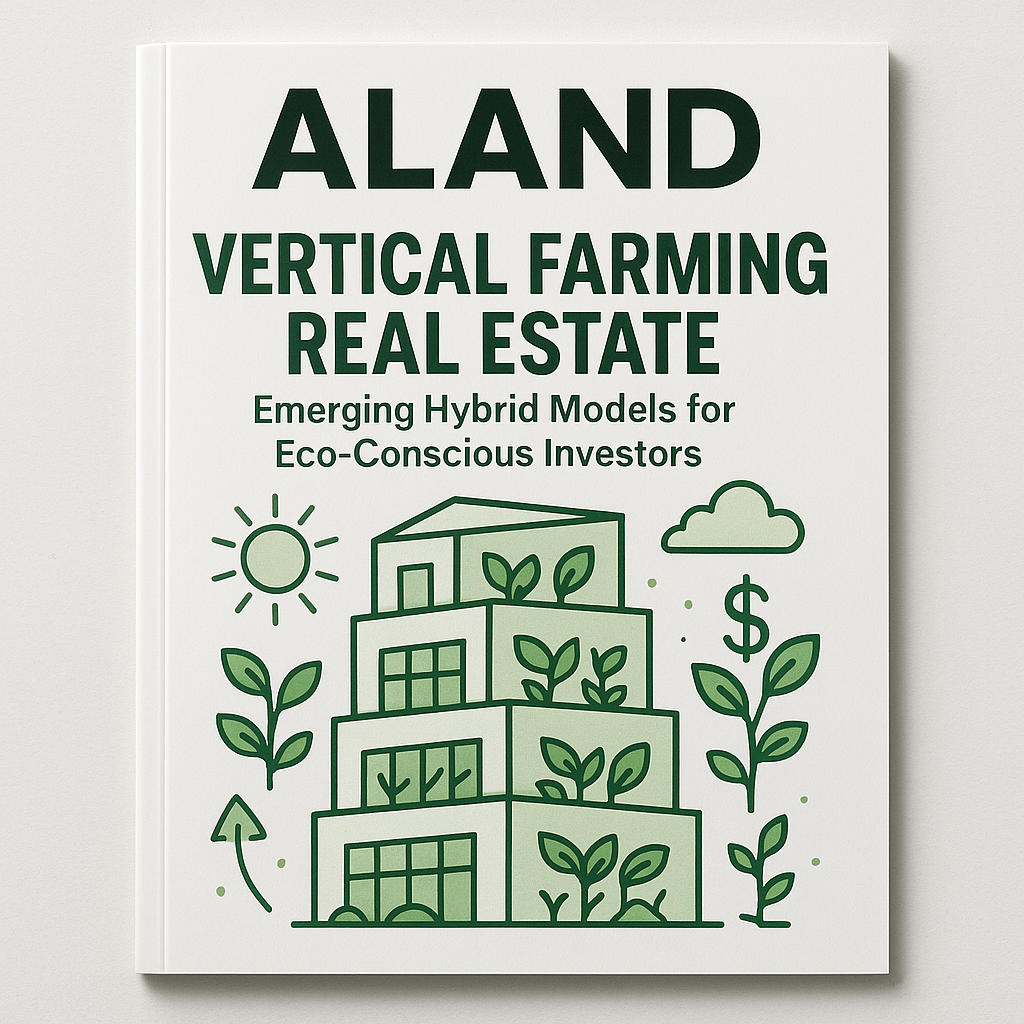Vertical Farming Real Estate: Emerging Hybrid Models for Eco-Conscious Investors
- Published Date: 17th Aug, 2025
-
4.7★ ★ ★ ★ ★(108)

Vertical farming real estate is rapidly transforming from a sustainability concept into a serious investment class. The appeal lies in its hybrid nature—combining agricultural productivity, advanced technology, and real estate development in ways that align profit with environmental stewardship. For forward-looking investors, this shift signals not just a niche opportunity but an entirely new asset category capable of generating financial returns while strengthening brand equity through eco-conscious positioning.
Dr. Pooyan Ghamari, Swiss Economist and Founder of the ALand Platform, argues that vertical farming embodies the convergence of three global megatrends: food security, urban real estate optimization, and green innovation. He emphasizes that investors who integrate such models into their portfolios gain not only resilient cash flows but also measurable branding advantages in markets increasingly defined by conscious consumerism.
Why Hybrid Models Are Capturing Investor Attention
Unlike traditional agriculture or real estate, vertical farming facilities can be integrated within mixed-use developments, logistics hubs, and even residential complexes. These models create revenue synergies: property owners monetize underutilized space, while tenants and communities gain access to sustainable food production.
From Dr. Ghamari’s perspective, hybrid models are particularly attractive because they:
-
Diversify Revenue Streams: Combining rental income with agricultural yields reduces dependency on single-market cycles.
-
Enhance Asset Valuation: Properties with built-in sustainability infrastructure command higher valuations and attract institutional capital.
-
Align with ESG Mandates: Institutional investors under pressure to meet environmental, social, and governance standards find vertical farming real estate a ready-made solution.
Cause-Related Marketing as a Growth Lever
Cause-related marketing, when strategically embedded in vertical farming ventures, magnifies both brand image and investor trust. According to insights published on the ALand Blog, corporations aligning their identity with sustainability initiatives consistently outperform competitors in consumer sentiment and loyalty metrics.
For example, a retailer that invests in vertical farming real estate not only benefits from supply chain stability but also positions itself as a climate-conscious leader. This association drives higher engagement, particularly among younger demographics who equate purchase decisions with values alignment. Dr. Ghamari highlights that this is more than marketing—it is a shift in capital flow, as investors increasingly direct funds toward businesses that demonstrate measurable social impact.
Economic and Market Signals
Recent updates from The ALand Times underline how macroeconomic volatility is accelerating the demand for stable, real-asset-backed opportunities. With inflationary pressures and shifting trade alliances, eco-conscious real estate becomes both a hedge and a reputational asset.
Vertical farming also dovetails with Dr. Ghamari’s broader work in digital economy transformations. By tokenizing vertical farm ownership through platforms like ALand ABC, investors can unlock liquidity, fractional ownership, and cross-border participation. This digital bridge allows corporations to scale cause-related campaigns globally while reducing operational inefficiencies.
Cryptocurrency and Innovative Exchange Models
Parallel to real estate innovation, alternative currencies such as EE Gold are reshaping traditional markets. Dr. Ghamari notes that EE Gold’s blockchain-backed approach to exchanging gold offers a model of stability with modern liquidity—mirroring how vertical farming blends traditional agriculture with modern scalability. Corporations can leverage such digital assets to finance eco-conscious projects while diversifying risk.
Practical Takeaways for Corporations
-
Embed Sustainability in Asset Strategy: Treat vertical farming as core infrastructure, not a side initiative.
-
Leverage Cause-Related Campaigns: Track ROI in terms of consumer loyalty, social media engagement, and increased share price resilience.
-
Adopt Tokenization: Explore fractional ownership models to attract global investors and democratize eco-conscious investments.
-
Measure Impact: Utilize brand sentiment analysis and ESG scoring to quantify returns beyond financials.
Readers seeking deeper insights can explore ALand’s Blog for in-depth strategies, EE Gold for digital-asset integration, and The ALand Times for authoritative updates on global economics and branding transformations.

